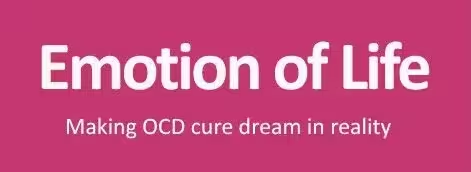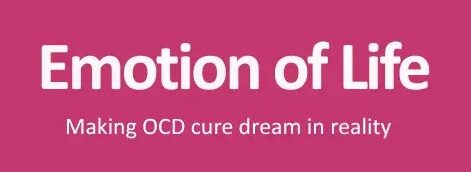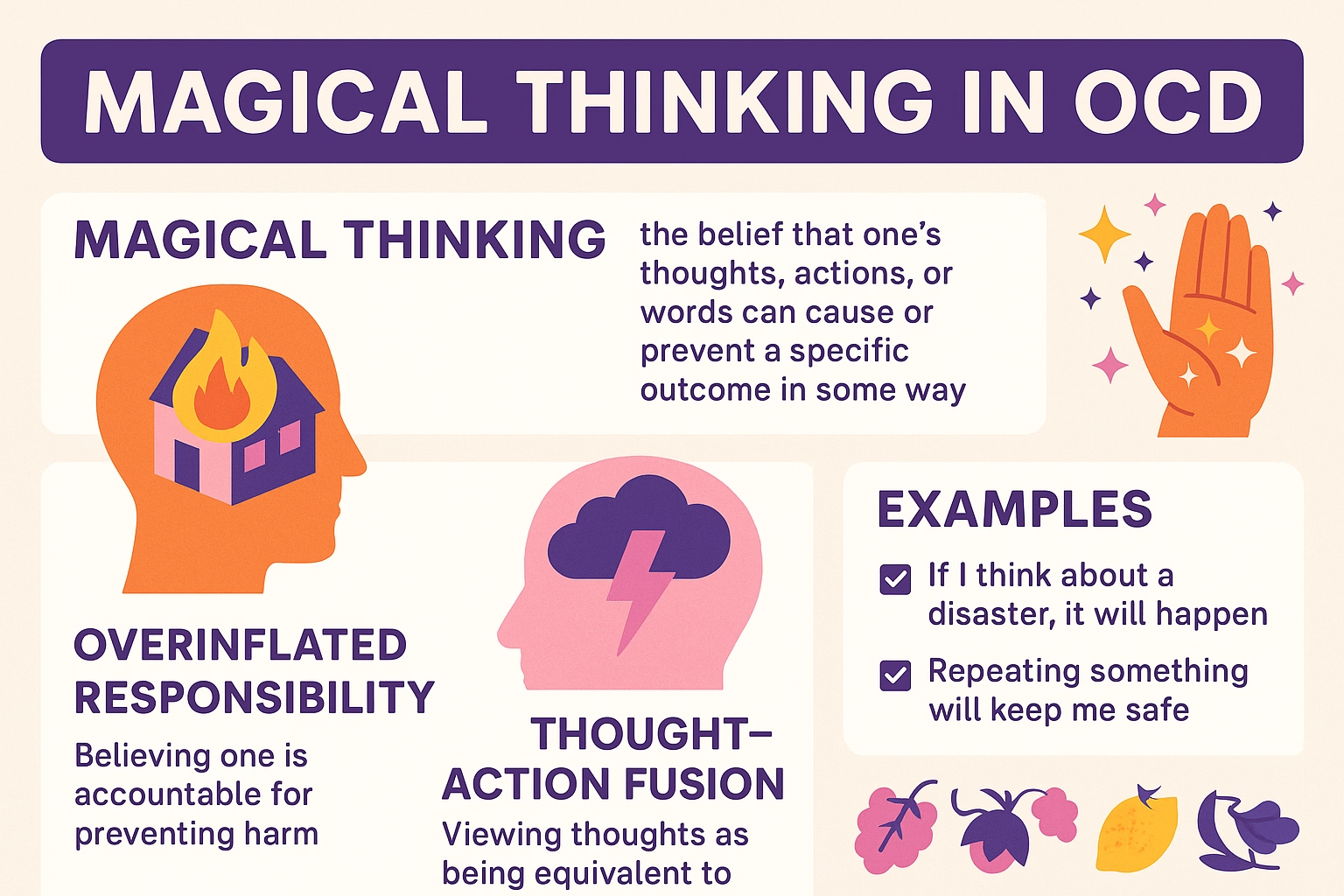Magical Thinking OCD Treatment Without Medicine – CBT & ERP
Magical Thinking OCD involves irrational beliefs that thoughts or actions can influence unrelated real-world events. At Emotion of Life, under the guidance of Shyam Gupta and Pratibha Gupta, recovery is possible without medication using structured therapies like CBT and ERP.
What Is Magical Thinking
It is a subtype of obsessive-compulsive behaviour where irrational beliefs link thoughts or rituals with imagined outcomes. For example, believing stepping on a crack can harm a loved one. Although sufferers may realize the thoughts are irrational, they cannot shake them, leading to compulsive behaviours.
Obsessions in Magical Thinking
- Irrational fears: e.g., fearing harm to loved ones if certain actions aren’t performed.
- Supernatural beliefs: intrusive thoughts involving mystical or spiritual consequences.
- Numerology: assigning “good” or “bad” value to specific numbers.
- Symbology: interpreting objects or patterns as omens.
Compulsions in Magical Thinking
- Rituals: elaborate behaviours to neutralize imagined harm.
- Counting: repeating actions a specific number of times.
- Avoidance: steering clear of “bad” or unlucky triggers.
- Mental rituals: silently reciting phrases to counteract fears.
- Reassurance-seeking: repeatedly asking others for confirmation.
Symptoms
- Strong belief in superstitions or magical cause-and-effect.
- Avoidance of “dangerous” situations or actions.
- Ritualistic behaviours linked to anxiety relief.
- Intense distress if rituals are resisted.
- Persistent reassurance-seeking.
Psychological Impact on Daily Life
- Anxiety and stress: constant fear of harm.
- Isolation: withdrawing from social activities.
- Time loss: rituals consuming hours each day.
- Lower quality of life: disruption in work, studies, and relationships.
- Guilt: blaming oneself for negative events.
Psychotherapies for Treatment
Cognitive Behavioral Therapy (CBT)
Helps identify and challenge irrational thoughts, reducing magical thinking patterns.
Exposure and Response Prevention (ERP)
Gradually exposes individuals to triggers while preventing compulsions, breaking the OCD cycle.
Mindfulness-Based Cognitive Therapy (MBCT)
Integrates mindfulness with CBT, fostering awareness of obsessions without judgment.
Acceptance and Commitment Therapy (ACT)
Encourages acceptance of intrusive thoughts while focusing on values-driven action.
Success Stories at Emotion of Life
Priya’s Freedom from Rituals
Priya, a 28-year-old teacher from Delhi, spent six years trapped in rituals. After joining the Recovery Program, CBT and ERP helped her break the cycle. Within 4 months, she reported complete recovery and now lives confidently.
Arjun’s Breakthrough
Arjun, 35, feared his thoughts could cause accidents. Through structured ERP, he reduced compulsions and regained balance within 5 months. Today, he works productively and enjoys family life free from OCD.
The 16-Step OCD Recovery & Cure Program
- Initial psychological assessment to identify OCD subtype and triggers.
- Psychoeducation for clients and families.
- Goal setting and motivation building.
- Daily monitoring of symptoms and progress.
- CBT for restructuring magical thinking.
- ERP planning with gradual exposure design.
- Response prevention training.
- Mindfulness and rational thinking practice.
- Wellness coaching covering sleep, diet, and exercise.
- Family involvement to reduce reassurance cycles.
- Daily intensive therapy sessions (online or onsite).
- Fear hierarchy and gradual exposure work.
- Relapse prevention training.
- Confidence and self-esteem building.
- Lifestyle integration for long-term success.
- Final review and graduation as OCD recovered & cured.
Conclusion
Magical Thinking OCD may feel overwhelming, but with structured non-medication therapies such as CBT and ERP, complete recovery is achievable. At Emotion of Life, we believe that OCD cure is possible in the right place, with the right guidance, and with dedicated effort from clients and their families.
What is Magical Thinking OCD?
How is Magical Thinking OCD different from normal superstitions?
Can Magical Thinking OCD be treated without medicines?
How long does it take to recover from Magical Thinking OCD?
Is full recovery from Magical Thinking OCD really possible?
Call: +91 9368503416 www.emotionoflife.in Email: info@emotionoflife.in
Book Now | Review | OCD Types | Our Experts | Success Stories| Contact Us| MyPsychologist


